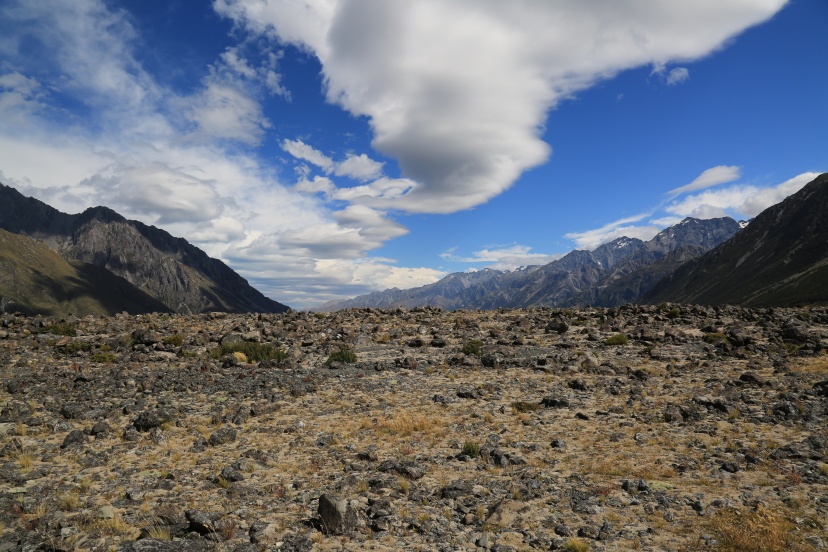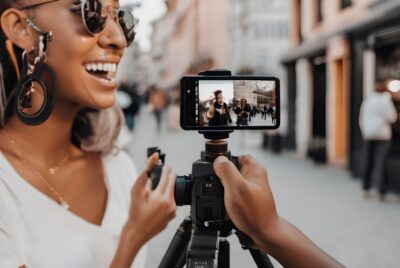Photography Subjects: The World Through the Lens
Introduction
As a passionate photography enthusiast, I am always captivated by the vast array of photography subjects that can be captured through the lens of a camera. From portraits to landscapes, each subject offers a unique opportunity to create compelling and breathtaking images. In this article, I will explore the importance of photography subjects and provide valuable insights into ten different genres. Join me on this journey as we uncover the magic of capturing moments through the lens.
1. Importance of Photography Subjects
Photography subjects play a pivotal role in defining the essence of an image. They provide photographers with the opportunity to convey stories, evoke emotions, and showcase the world from their unique perspectives. A well-chosen subject can transform an ordinary photograph into a work of art, drawing the viewer’s attention and creating a lasting impression. Particular photography subjects offer the opportunity to become a recognised specialist in that subject area. Please see our Further Reading section below for a comprehensive list of our subject articles.
>>> See TODAY’s deals for DSLR kit and accessories HERE <<<
2. Portrait Photography
2.1 Equipment Needed
To embark on your portrait photography journey, you’ll need some essential equipment. A reliable camera with interchangeable lenses, such as a DSLR or mirrorless camera, will give you the flexibility to capture stunning portraits. Additionally, a portrait lens, such as a 50mm or 85mm prime lens, can help you achieve beautiful bokeh and pleasing background blur. Consider investing in a tripod to ensure stability and sharpness in your shots.
2.2 Tips for Capturing Stunning Portraits
When photographing portraits, lighting plays a crucial role. Natural light can create soft and flattering tones, so consider shooting outdoors or near a large window. If shooting in low-light conditions, a speedlight or detachable camera flash can help you achieve balanced lighting. Pay attention to composition, posing, and expressions to bring out the personality and character of your subjects. Don’t hesitate to experiment with different angles and perspectives to add visual interest to your portraits.
2.3 Reasons for Choosing Portrait Photography
Portrait photography enables you to connect with your subjects on a deeper level and capture their unique essence. The human face is a canvas that tells stories, reflects emotions, and unveils the beauty of individuality. Through portrait photography subjects, you can freeze moments in time, preserving memories for generations to come. The intimate and personal nature of portraits allows you to create meaningful connections with your subjects and showcase their authenticity.
3. Landscape Photography
3.1 Equipment Needed
When venturing into the realm of landscape photography, certain equipment can help you capture breathtaking vistas. A wide-angle lens is essential to capture the expansive beauty of landscapes. Consider using a sturdy tripod to maintain stability and ensure sharpness, particularly in long-exposure shots. Graduated neutral density filters can help balance exposure when capturing scenes with contrasting light, such as sunsets or sunrises.
3.2 Techniques for Capturing Breathtaking Landscapes
To capture truly awe-inspiring landscapes, keep the following tips in mind. Firstly, scout the location beforehand to identify potential viewpoints and interesting elements that can enhance your composition. Consider the rule of thirds and leading lines to create a sense of depth and guide the viewer’s gaze. Utilize the golden hour, the period shortly after sunrise or before sunset, when the soft, warm light adds a magical touch to your images. Experiment with different perspectives, such as shooting from low angles or incorporating foreground elements to add depth and a sense of scale to your photographs.
3.3 Reasons for Choosing Landscape Photography
Landscape photography allows you to immerse yourself in the beauty of nature and capture breathtaking scenes that evoke a sense of wonder and tranquility. It offers an opportunity to showcase the grandeur of the natural world and inspire others to appreciate and protect our environment. Through landscape photography, you can convey the awe-inspiring power of nature and awaken a sense of connection with the Earth.
4. Macro Photography
4.1 Equipment Needed
Macro photography delves into the fascinating world of tiny details and intricate textures. To excel in this genre, you’ll need specialized equipment. A macro lens is essential for capturing close-up shots with exceptional clarity and detail. Consider using a tripod to maintain stability, as shooting at such close distances can magnify even the slightest camera movement. To achieve optimal lighting, a ring light or a macro flash can be beneficial, as they provide even illumination for your subject.
4.2 Techniques for Capturing Incredible Close-Ups
When engaging in macro photography, patience and attention to detail are paramount. Find subjects with captivating textures, such as flowers, insects, or everyday objects, and explore them from a new perspective. Use a shallow depth of field to isolate your subject and create a pleasing background blur. Pay attention to lighting, as diffused or natural light can enhance the intricate details and textures. Experiment with different angles, compositions, and focal points to bring out the hidden beauty in the miniature world.
4.3 Reasons for Choosing Macro Photography
Macro photography allows you to explore a hidden universe that often goes unnoticed by the naked eye. It unveils the intricate details and textures that surround us, offering a fresh perspective on the beauty of small-scale subjects. Through macro photography, you can capture the delicate intricacies of nature, revealing the hidden patterns, textures, and colors that exist in the tiny world around us. It enables you to appreciate the beauty in the small things and find awe-inspiring compositions in the
most unexpected places.
>>> See TODAY’s deals for DSLR kit and accessories HERE <<<
5. Wildlife Photography
5.1 Equipment Needed
When venturing into the world of wildlife photography, it’s important to have the right equipment to capture those captivating moments. A telephoto lens with a long focal length will allow you to get close to the wildlife without disturbing them. Consider using a tripod or monopod for stability, especially when dealing with heavy telephoto lenses. Additionally, a camera with a fast autofocus system will help you capture those swift and unpredictable movements of wildlife.
5.2 Tips for Capturing Striking Wildlife Shots
Patience and observation are key when it comes to wildlife photography. Study the behavior of your subjects and anticipate their movements to capture them in their natural environment. Use a wide aperture to create a shallow depth of field and emphasize your subject while blurring the background. Be mindful of the lighting conditions and try to shoot during the golden hours for warm and soft light. Remember to respect the wildlife and maintain a safe distance to ensure their well-being.
5.3 Reasons for Choosing Wildlife Photography
Wildlife photography allows you to witness the beauty and diversity of the animal kingdom firsthand. It provides an opportunity to raise awareness about conservation efforts and the importance of protecting our wildlife and their habitats. Through your images, you can tell stories of the fascinating behaviors, relationships, and unique characteristics of different species, inspiring others to appreciate and respect the natural world.
6. Street Photography
6.1 Equipment Needed
Street photography captures the essence of everyday life in public spaces, and the right equipment can help you document those candid moments. Consider using a lightweight compact camera that allows for quick and discreet shooting. Prime lenses with a moderate focal length, such as 35mm or 50mm, are ideal for street photography, as they offer a versatile perspective. Additionally, a camera with fast autofocus and good low-light performance will help improve your photography subjects to capture fleeting moments on the streets.
6.2 Techniques for Capturing Authentic Street Moments
Street photography requires a keen eye and the ability to anticipate decisive moments. Blend into the surroundings and observe the interactions and activities of people. Look for interesting characters, emotions, and unique scenes that tell a story. Experiment with different angles, compositions, and perspectives to add visual interest to your images. Don’t be afraid to engage with your subjects, building connections that allow you to capture genuine and authentic moments.
6.3 Reasons for Choosing Street Photography
Street photography allows you to document the human experience and the diversity of cultures and lifestyles. It enables you to tell compelling stories about the ordinary and extraordinary moments that occur in public spaces. Through street photography, you can capture the energy, emotions, and essence of a city or community. It challenges you to be present, observant, and responsive to the ever-changing environment around you.
7. Still Life Photography
7.1 Equipment Needed
Still life photography is a genre that focuses on inanimate objects, requiring careful attention to detail and composition. To create captivating still life images, consider using a camera with manual control capabilities. A tripod is essential for stability and precise framing. Experiment with different lenses, such as a macro lens for capturing intricate details or a standard lens for more versatile compositions. Lighting equipment, such as continuous lights or strobes, will give you control over the lighting conditions and allow for creative experimentation.
7.2 Tips for Creating Captivating Still Life Images
In still life photography, you have complete control over the subject and the composition. Pay attention to the arrangement of objects, considering factors such as color, shape, and texture. Experiment with different backgrounds and props to create visually appealing and harmonious compositions. Use natural or artificial light to create the desired mood and emphasize the textures and details of the objects. Explore different angles and perspectives to add depth and visual interest to your still life images. Don’t be afraid to experiment and think outside the box to create unique and compelling compositions.
7.3 Reasons for Choosing Still Life Photography
Still life photography allows you to create art from the ordinary objects that surround us. It invites you to slow down and appreciate the beauty in everyday items. Through careful composition, lighting, and attention to detail, you can transform simple objects into captivating visual narratives. Still life photography offers endless possibilities for creative expression and allows you to explore your artistic vision in a controlled and intimate setting.
8. Sports Photography
8.1 Equipment Needed
Capturing the exhilarating moments of sports requires specialized equipment to freeze the action. A camera with fast autofocus and continuous shooting capabilities is essential. A telephoto lens with a long focal length will allow you to get close to the action even from a distance. Consider using a monopod or a camera strap with a stabilizing function to reduce camera shake during fast-paced movements.
8.2 Techniques for Freezing Action and Capturing Sports Moments
Sports photography demands anticipation, timing, and an understanding of the sport you’re capturing. Set your camera to a fast shutter speed to freeze the action and capture the fleeting moments. Use continuous autofocus to track the subject and maintain sharpness. Pay attention to the composition and capture the emotions, intensity, and interactions of the athletes. Experiment with different angles and perspectives to add dynamism and storytelling to your images.
8.3 Reasons for Choosing Sports Photography
Sports photography allows you to capture the passion, dedication, and athleticism of athletes in action. It offers a thrilling opportunity to document moments of triumph, teamwork, and determination. Through your images, you can tell stories of perseverance, competition, and the pursuit of excellence. Sports photography enables you to convey the energy and excitement of sports to viewers, transporting them to the heart of the action.
>>> See TODAY’s deals for DSLR kit and accessories HERE <<<
9. Architectural Photography
9.1 Equipment Needed
Architectural photography focuses on capturing the beauty and grandeur of buildings and structures. To excel in this genre, you’ll need specialized equipment. A wide-angle lens will allow you to capture expansive architectural details. A sturdy tripod is essential for maintaining stability and capturing sharp images, especially in low-light conditions. Consider using a tilt-shift lens for precise control over perspective and distortion correction.
9.2 Tips for Capturing Striking Architectural Details
When photographing architecture, pay attention to the lines, shapes, and symmetry of the structures. Explore different angles and perspectives to highlight the unique features and details. Consider the lighting conditions and shoot during the golden hour or blue hour for soft and warm light. Experiment with long exposures to capture light trails or create a sense of motion in architectural elements. Remove any distractions from the frame and focus on the key elements that define the building.
9.3 Reasons for Choosing Architectural Photography
Architectural photography allows you to appreciate and celebrate the beauty of human-made structures. It enables you to capture the unique design, craftsmanship, and historical significance of buildings. Through architectural photography subjects, you can showcase the interplay of light and shadow, the intricate details, and the storytelling nature of structures. It offers a creative outlet to explore the intersection of art and functionality in the built environment.
10. Travel Photography
10.1 Equipment Needed
Travel photography captures the essence of a place, its people, culture, and landscapes. To document your travel experiences, consider having a versatile camera that is lightweight and portable. A combination of zoom and prime lenses will provide flexibility in capturing different scenes and subjects. Don’t forget to bring extra batteries and memory cards to ensure you can capture all
those unforgettable moments without any interruptions.
10.2 Techniques for Documenting Memorable Travel Experiences
Travel photography is about storytelling and capturing the essence of a place. Explore the local culture, interact with the people, and immerse yourself in the surroundings to truly capture the spirit of the destination. Look for unique perspectives and compositions that convey the atmosphere and character of the place. Pay attention to details, such as architecture, street scenes, food, and landscapes, to create a comprehensive visual narrative. Experiment with different lighting conditions and embrace the spontaneity of travel to capture authentic and memorable images.
10.3 Reasons for Choosing Travel Photography
Travel photography allows you to document your adventures, share your experiences, and inspire others to explore the world. It provides a platform to showcase the diversity and beauty of different cultures, landscapes, and people. Through travel photography, you can capture moments of joy, awe, and discovery, and preserve memories that will last a lifetime. It enables you to tell stories of your journeys and evoke a sense of wanderlust in others.
Conclusions of photography subjects
Photography subjects encompass a vast array of possibilities, each offering unique opportunities for artistic expression and storytelling. Whether you choose portrait photography, landscape photography, macro photography, wildlife photography, street photography, still life photography, sports photography, architectural photography, or travel photography, each genre presents its own challenges and rewards. By exploring different subjects, you can develop your skills, broaden your creative horizons, and capture moments that resonate with both you and your audience. So grab your camera, step into the world, and unveil the artistic wonders that await through the lens. Happy shooting! With all this new information you have discovered here, you will want to know the best place to buy cameras and camera equipment. We give you 10 reasons why you should buy cameras and equipment from Amazon here.
>>> See TODAY’s deals for DSLR kit and accessories HERE <<<
Further Reading
Photography Subjects covered in my other Articles
The following subjects are covered in depth. Click on the links below:
advertising photography tips – coming soon
best cameras for sports photography
Boudoir Photography tips
Car Photography tips
contemporary photography tips
double exposure photography tips





Comments are closed.